Wapa di Ume Sidemen
Located at a historic location on Hang Trong Street, with a sweeping view of the legendary Hoan Kiem Lake, Apricot Hotel is a prime destination to explore the quintessence of Vietnamese art and culture. Shrouded in neo-classical design with artistic Vietnamese touches, Apricot’s 123 elegant rooms exude luxury in an inviting and intimate atmosphere.
In addition to the 5-star accommodation service, there are countless things that guests will remember about their stay at Apricot Hotel. Guests can enjoy a cozy breakfast at L’Artiste Restaurant, a luxurious dinner at Palette Restaurant, be immersed in the delicious afternoon tea at A’telier Lounge, relax at the peaceful Spa L’Art, or sip on a cocktail while adoring a sweeping view of the historic Hoan Kiem Lake at Rooftop Bar One36.
Sketch
Looking out across the hotel’s courtyard, Sketch room encompass Apricot’s tasteful décor and stunning original artworks. Set to luxurious surrounding, an utmost level of comfort await guests in this Sketch room category.
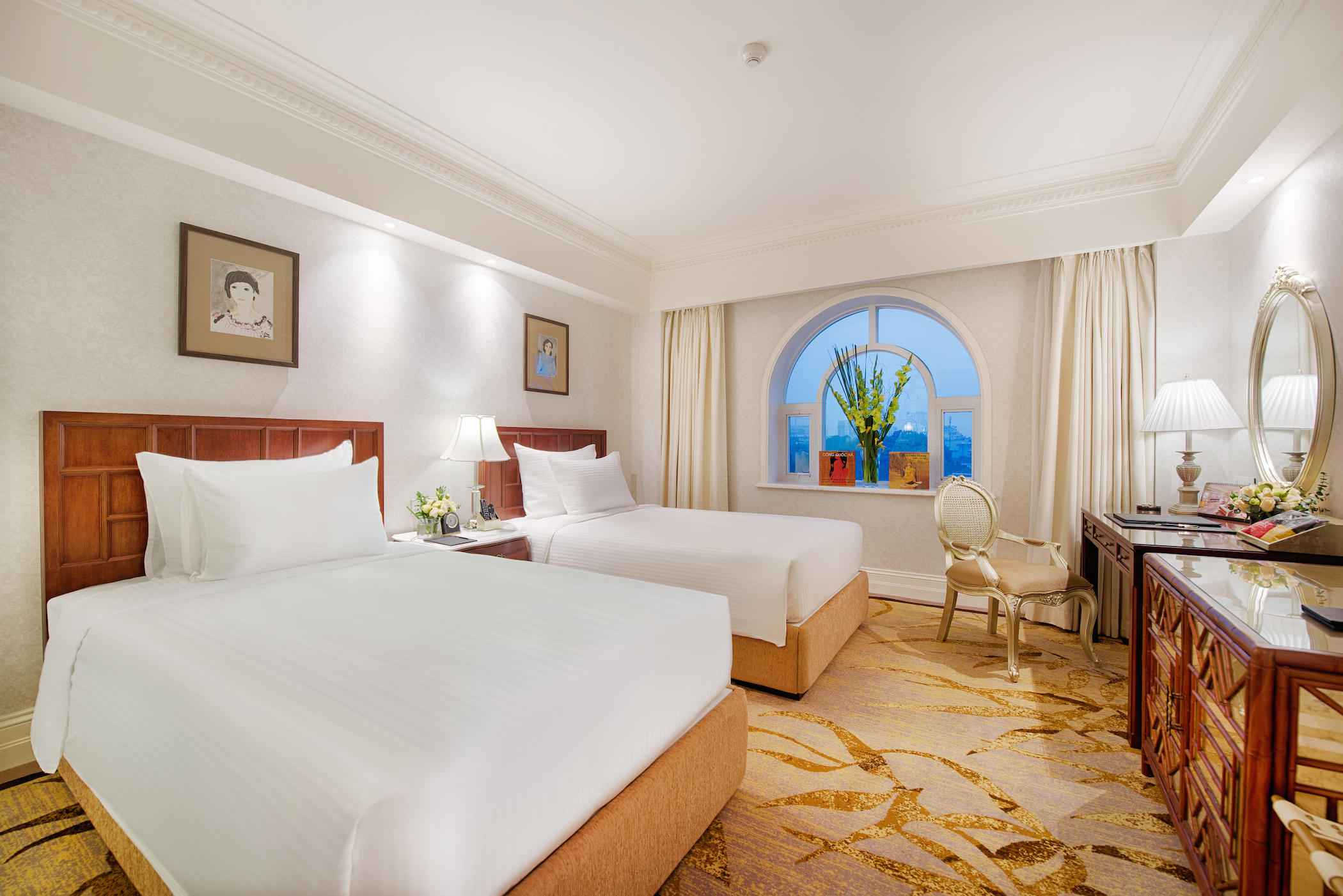
Canvas with City View
Featuring a fantastic view of the city’s bustling lifestyle, each room comes equipped with high-class facilities and amenities in a neo-classic design. The exquisite renowned artworks, added essentials and relaxing atmosphere will elevate guest stay to its utmost comfort of home.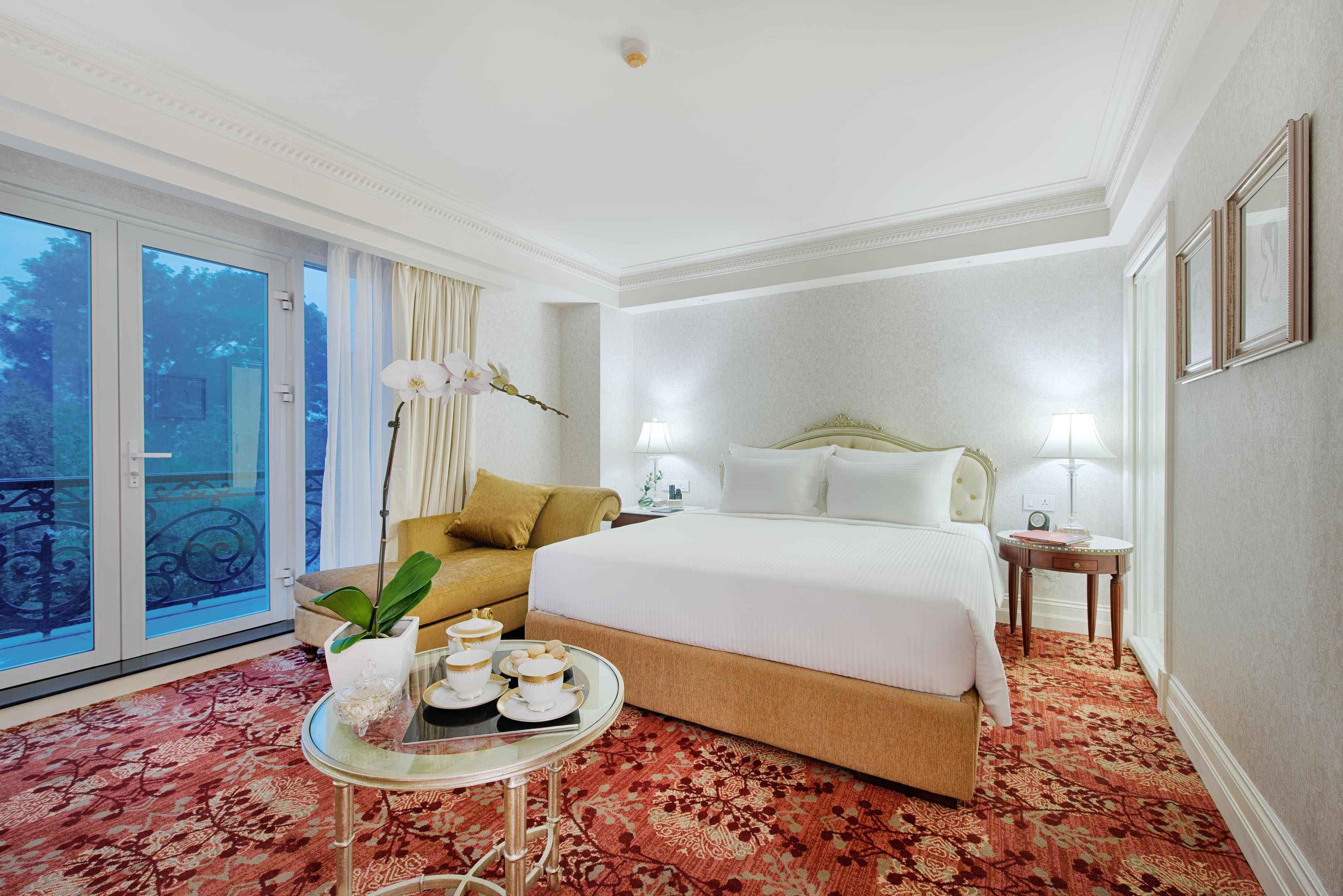
Canvas with Lake View
The elegantly appointed rooms feature fabulous views across the lake with original artworks by famous Vietnamese artists. This upper delux premium rooms with added essentials will elevate guest stay to its utmost comfort of home.
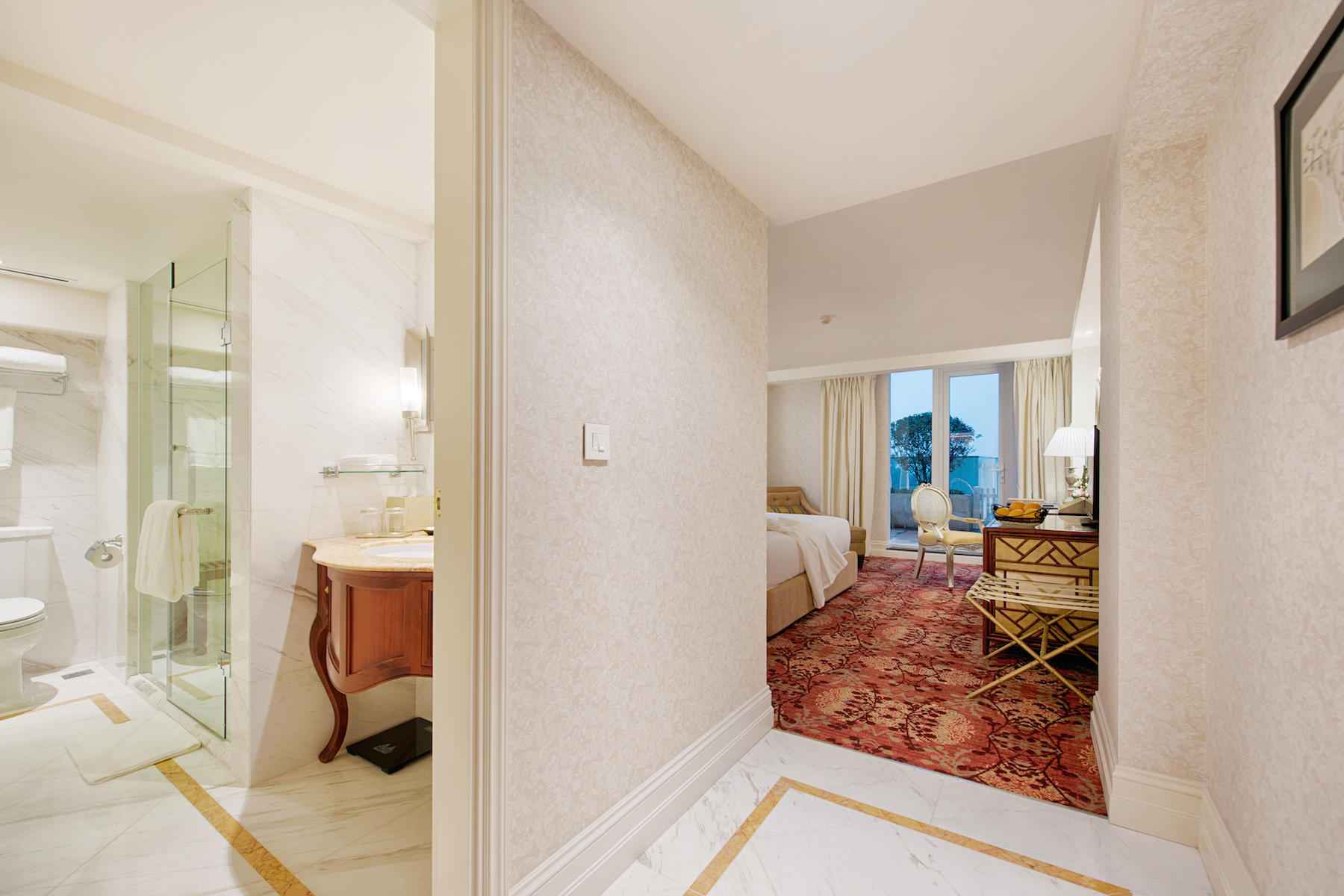
Gallery
The premium suites harmonize French design with magnificent prospects of and thought-provoking local artworks and sculptures. All rooms come with a spacious living room, while selected rooms have private gardens where you can enjoy your own views of ‘s skyline.
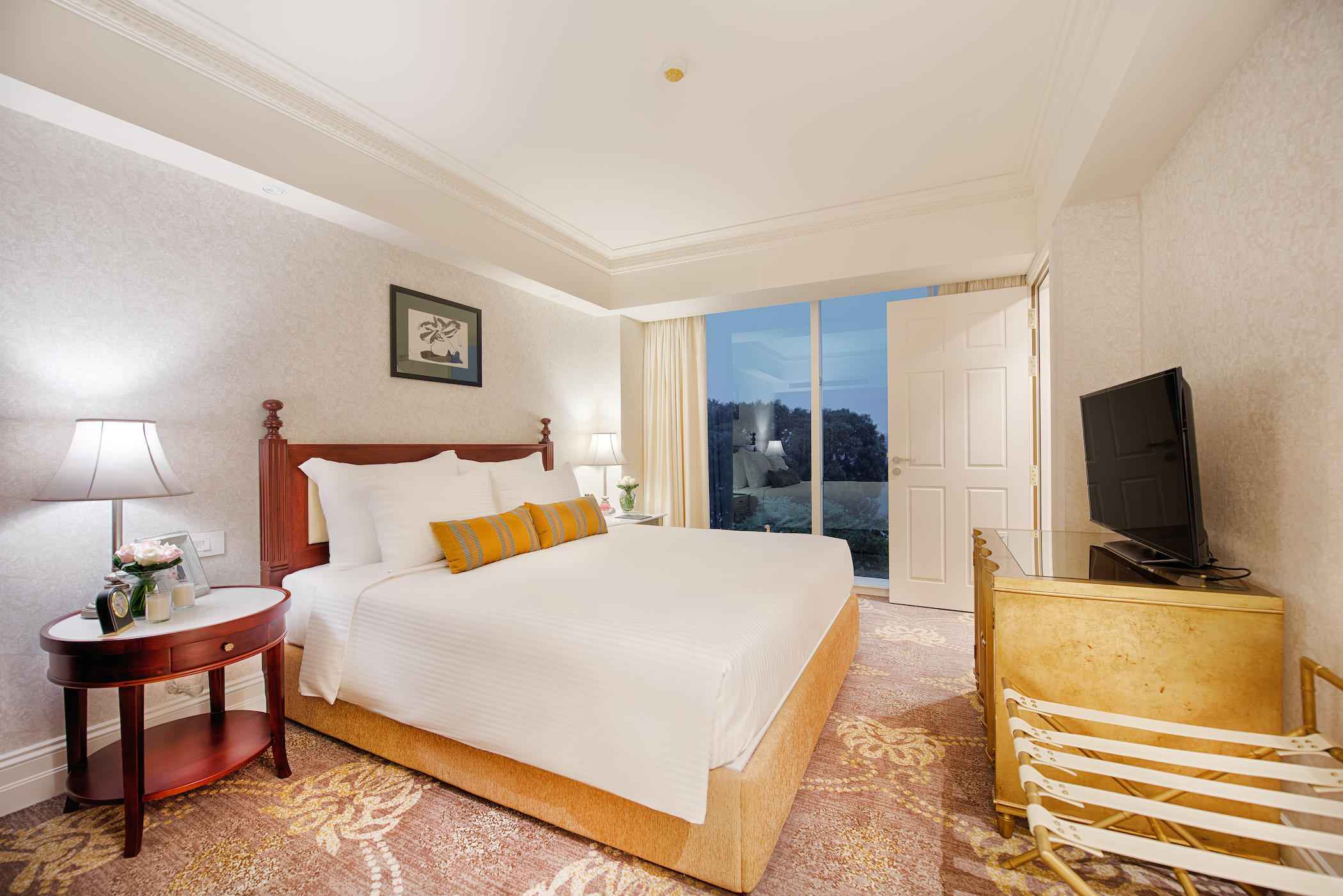
Junior Studio
Prepare to make yourself comfortable for a long and pleasant stay with our apartment rooms which feature all the built-in facilities of a premium studio apartment: a living room, dining room and kitchenette, all with Apricot’s refined finishing touches.
Studio
With a generous 56 square meteres of space, Studio room offers a luxury ambience for extended stays in Hanoi. The lavish apartment room provides a home-away-from-home vibe with a living room, dining room, kitchenette equipment and a bath tub in an artistic design.
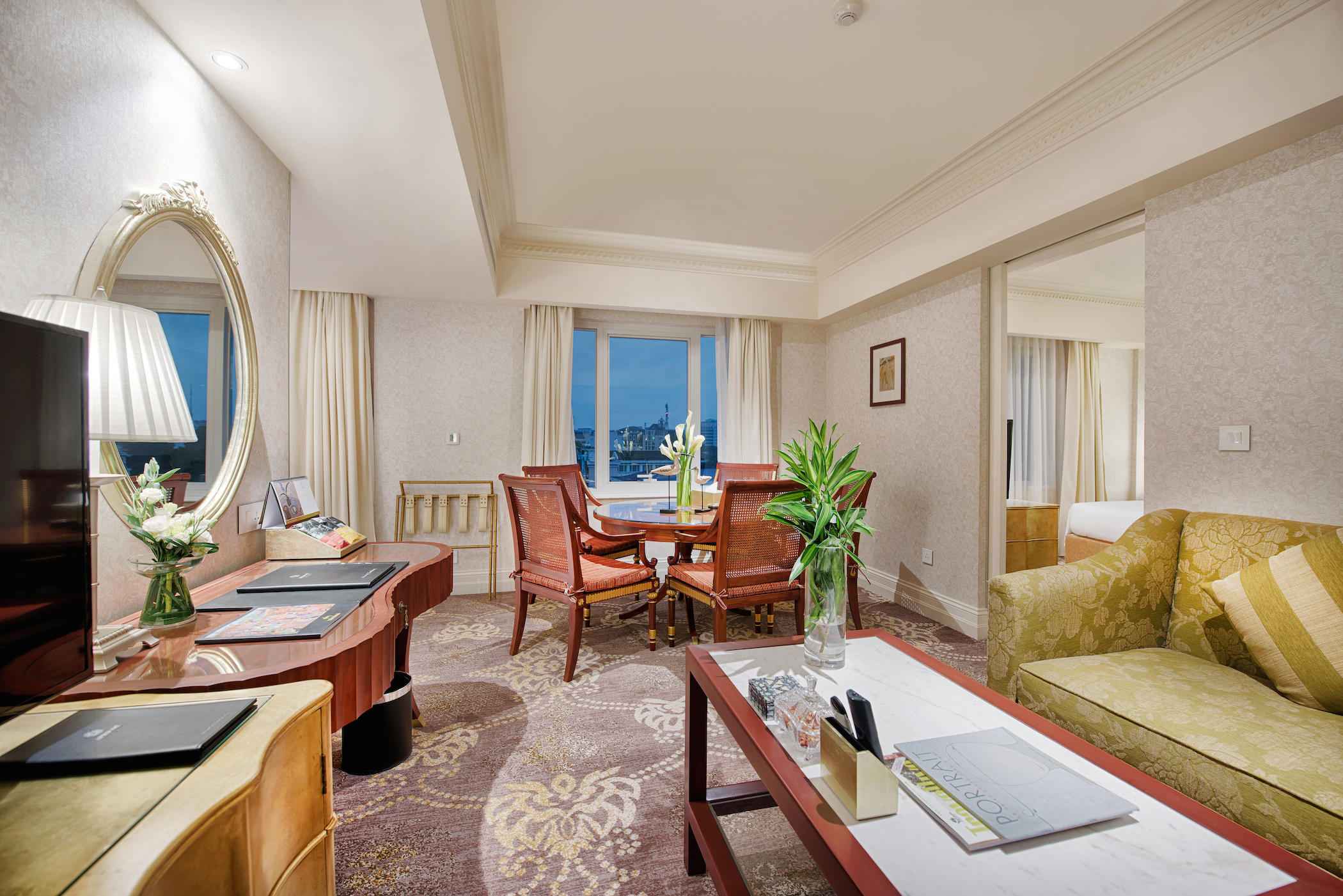
Masterpiece
As Apricot’s optimum level of luxury accommodation, the grand Masterpiece Suite offer views of that eclipse any other in the city. These genuine Masterpieces possess a milieu of luxury, tranquility and all the refined essences that define the true fine art of living.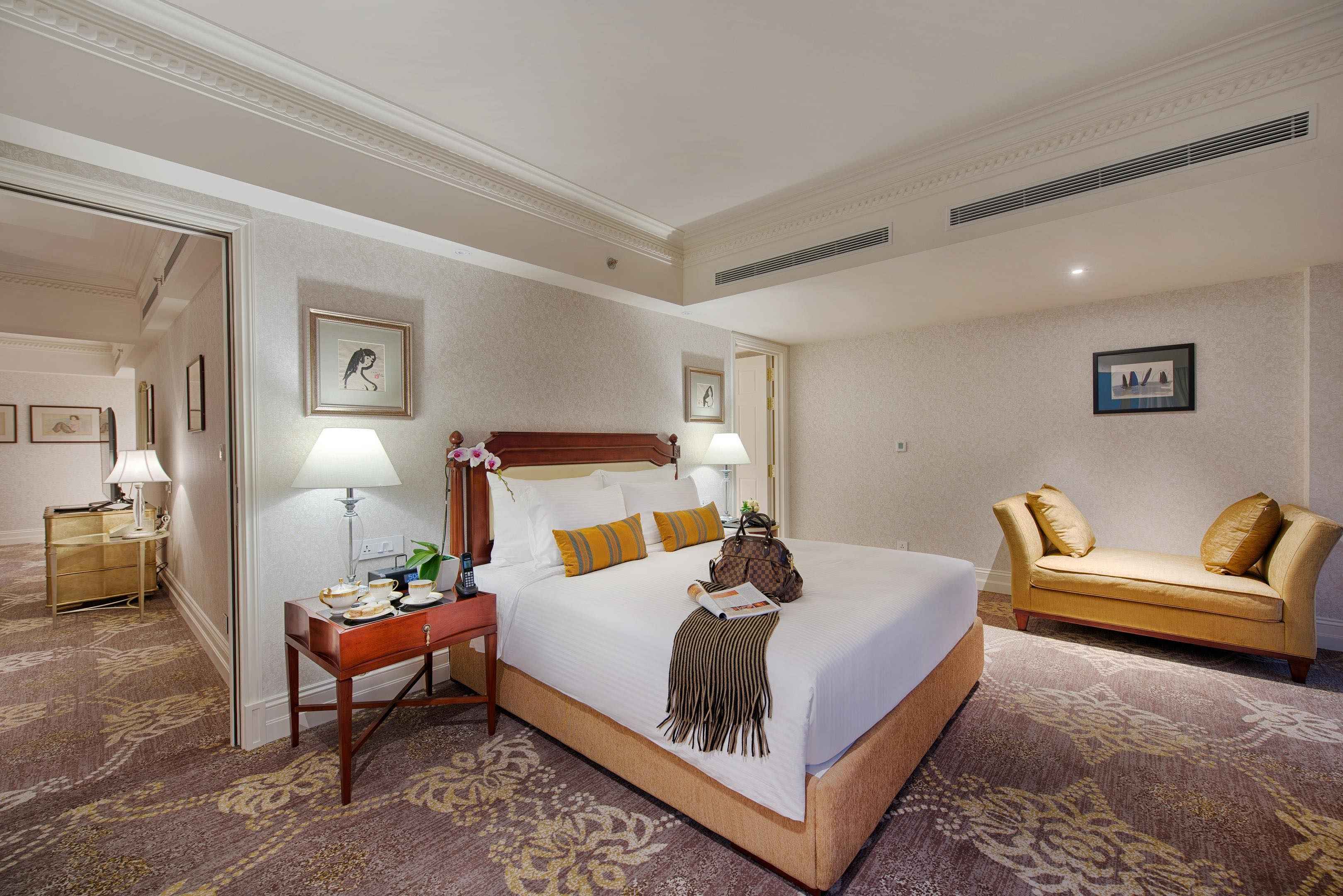
Hanoi will simultaneously surprise, charm and chew you up. Founded along the Red River, Hanoi was named Thang Long (soaring dragon) by Emperor Ly Thai To in 1010. Over a thousand years of war, natural disasters and new administrations, the city grew from swamplands into the charismatic capital it is today. Take in details of the ancient architecture, battle the barrage of millennials on motorbikes and drink fresh bia hơi in the Old Quarter. Here are 11 must-see stops in Hanoi. The Tour Desk is on hand to guide you through the endless opportunities to discover the beauty of Vietnam in and around Hanoi.
Ho Chi Minh Mausoleum
Ho Chi Minh Mausoleum Soldiers stand guard the entrance of Ho Chi Minh's Mausoleum. This commanding construction was built from 1973 to 1975 to house the embalmed body of Vietnam’s greatest political leader, Hồ Chí Minh. Visitors and Vietnamese queue for hours every morning to pay their respects to the cadaver, dressed in a khaki wardrobe and encased in a glass sarcophagus.
One Pillar Pagoda
This Buddhist wooden pagoda was built in the middle of a lotus pond on a single stone pillar by the Emperor Ly Thai To in 1049. Archives suggest it was built in honor of the Goddess of Mercy, who answered the Emperor's prayers for a male heir. The structure is designed to resemble a lotus flower blossoming from muddy waters, a symbol of purity in Buddhist philosophy.
The Old Quarter
The Old QuarterAt the top of Hoan Kiem Lake, Dinh Tien Hoang 'roundabout' is a great starting point for exploring the alleys of the Old Quarter. Hanoi’s historic Old Quarter is a single square kilometre comprised of 36 streets. Since the 15th century, each street has been home to artisans and craftsmen who traded in the specific merchandise for which their street was named. Today, the charm of these streets still remains. Prepare to marvel as you wander from silver street to bamboo street, silk street to decoration street, all within a stone's throw of each other.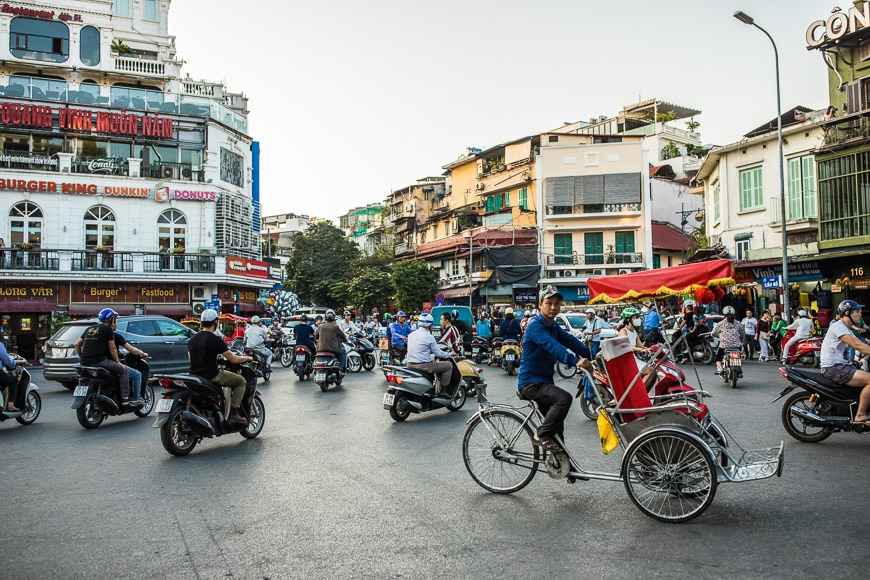
Hanoi Opera House
Opera House HanoiThe Opera House is at the edge of Hanoi's French Quarter, where a few colonial buildings have been well preserved. Constructed at the turn of the 20th century, this beautiful colonial building is the largest theater in Vietnam. After nearly 100 years of operation, the Opera House was carefully refurbished in 1997 and equipped with state-of-the-art facilities. Today the venue attracts renowned performers, productions and musicians. TIP: Culture lovers should book tickets to see 'My Village' at the Opera House. This impressive showcase combines acrobatics, traditional dance and music.
Vietnamese Women's Museum
Vietnamese Women's MuseumThis museum boasts a floor on textiles of ethnic groups, women's crucial role in wartimes and even their practices as mediums of the 'Mother Goddess' worship. The Vietnamese Women’s Museum is one of the most modern museums in Vietnam. Housing a series of excellent exhibitions presenting artifacts, costumes, crafts, memoir and photographs from the past 100 years, the museum reveals the pivotal role of Vietnamese women in their country's history and society.
The Water Puppet Theatre
Water Puppet Theatre HanoiLive music is always performed alongside the puppeteering with traditional instruments and delicate vocals. Dating back to the 11th century, water puppet performances are ideal for light entertainment and insight into Vietnamese folklore. Wading around in waist-deep water holding bamboo poles, puppeteers operate the lacquered wooden characters from behind a screen, reenacting scenes from rural village life.
Hoan Kiem Lake
Hoan Kiem Lake HanoiTurtle Tower rests at the centre of 'the Lake of the Restored Sword.' Legend says Emperor Ly Thai To was gifted a magical sword by a giant golden turtle who lived in the lake in order to defeat the Ming dynasty. Once victorious, Ly Thai To gave the sword back to the turtle who dove down to return the sword to the gods. Hoan Kiem Lake is admired for its beauty as well as insight into the daily life of Hanoians. Watch locals practicing their daily exercise and Tai Chi routines in the gardens by the water's edge.
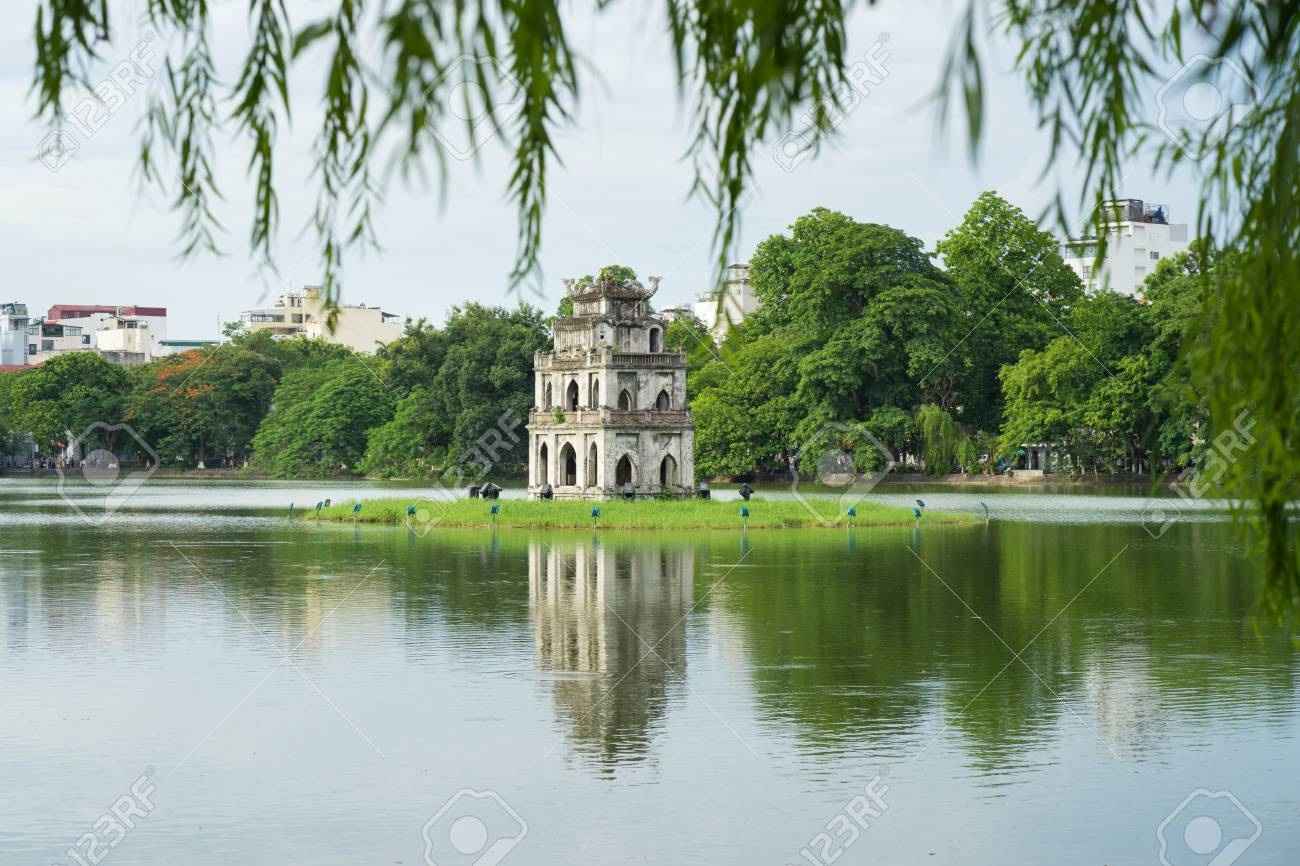
Ngoc Son Temple
The Ngoc Son Temple, or The Temple of the Jade Mountain, is situated on a small tree-sheltered island on the north side of Hoan Kiem Lake. Connected by a stunning scarlet bridge, this classic Vietnamese structure was built in honour of the intellectual scholar Saint Van Xuong, and national hero General Tran Hung Dao. In 1884, the Confucian scholar made a series of renovations to the site, including adding parallel sentences (câu đối) or word puzzles to the walls.
Temple of Literature
Temple of Literature Vietnam TourismThe main gate of the nation's oldest university, be sure to visit during lunch time to avoid crowds. Built by Emperor Ly Thanh Tong during the Ly dynasty, the Temple of Literature (Văn Miếu in Vietnamese) was erected in honour of the philosopher Confucius and his disciples in 1070. In 1076, it became home to Hanoi’s first university, Quốc Tử Giám. The site is one of the oldest in Hanoi and a national symbol of Vietnamese education and architecture. Today, the temple houses five court yards, records of Vietnamese scholars, and statues of turtles which are said to bring students good luck in their exams.
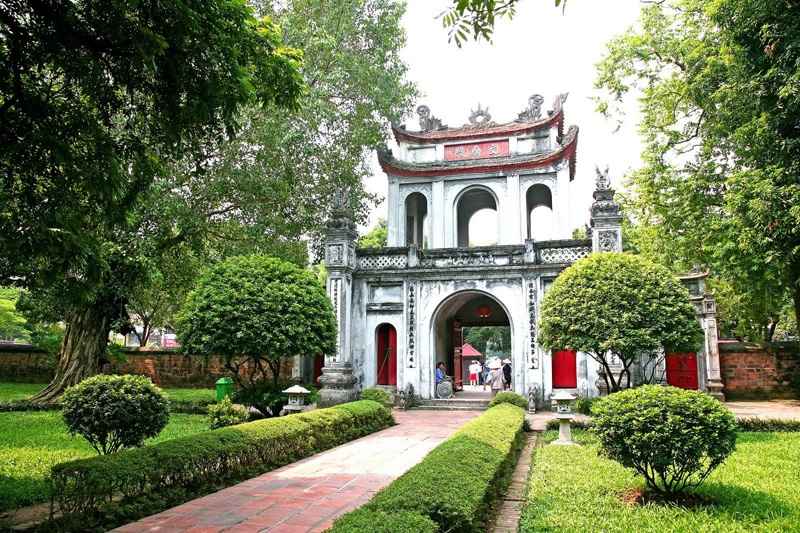
Museum of Ethnology
The Museum of Ethnology HanoiThe gardens feature traditional structures, including the communal houses of the Bahnar or Giarai ethnic groups which can reach up to 30 metres high. This amazing museum examines the everyday life of Vietnam's 54 ethnic minorities. Designed by ethnic Tay architect Ha Duc Linh and French architect Veronique Dolfus, the museum hosts three main exhibition areas. Exhibitions display cultural costumes, handicrafts, videos and artifacts; while the outdoor space showcases impressive life-size replicas of ethnic architecture.
Saint Joseph's Cathedral
St. Joseph's CathedralThe cafes by the Cathedral are a perfect spot to watch the bustle of Hanoi. Saint Joseph’s Cathedral (also known as Hanoi Cathedral), was built on the site of the Bao Thien Tower, which was the most famous landmark in the capital during the Ly Dynasty. The architect was inspired by the Neo-Gothic style of the Notre Dame de Paris. When visiting, expect to see a multicultural crowd of worshippers and plenty of Vietnamese newlyweds having romantic photo shoots.
Tours from Hanoi
HALONG BAY
Halong Bay is a beautiful natural wonder in northern Vietnam near the Chinese border. The bay is dotted with 1,600 limestone islands and islets and covers an area of over 1,500 sqkm. This extraordinary area was declared a UNESCO World Heritage Site in 1994. For many tourists, this place is like something right out of a movie. The fact is that Halong Bay features a wide range of biodiversity, while the surrealistic scenery has indeed featured in endless movies.

TAM COC
With limestone outcrops amid serene rice paddies, Tam Coc is best appreciated on a languorous rowing-boat ride, with the soundtrack of the river lapping against the oars.
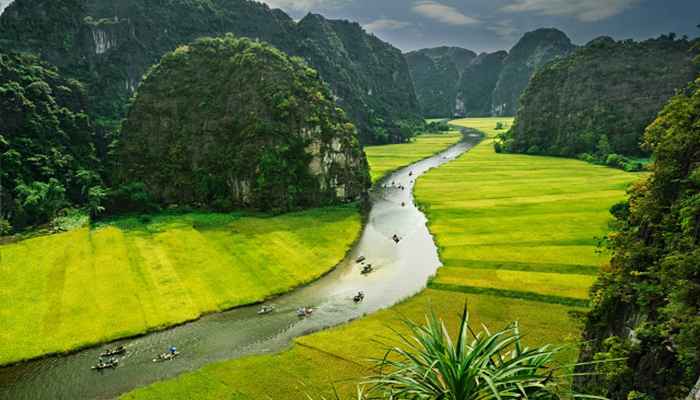
TRANG AN - BAI DINH
Located in Ninh Binh province (100 km southeast of Hanoi), Trang An Grottoes Area is considered as a great rock garden locating in a vast lake. All the scenes seem to be mingled, which creates a particular & interesting space awaking range of mythical imagination. Our interesting tour also takes you to Bai Dinh Pagoda, which is a complex of Buddhist temples in Bai Dinh Mountain, which is known as the largest complex of Buddhist temples at completion in Vietnam and is a popular site for Buddhist pilgrims across Vietnam.
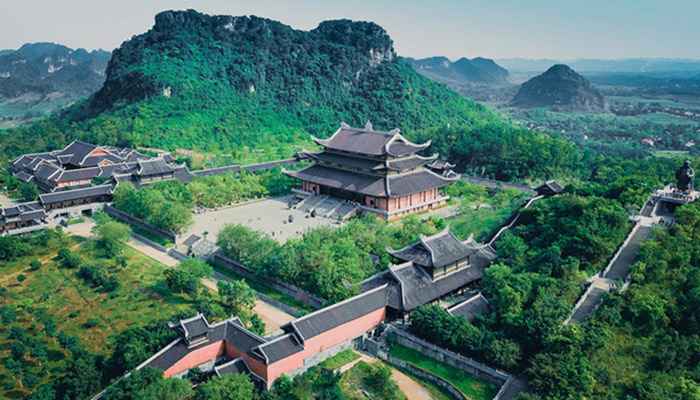
PERFUME PAGODA
Known locally as Chua Huong or ‘inner temple’, it is at the centre of a very revered and sacred site featuring a maze of mainly Buddhist temples built into the limestone cliffs of Huong Tich. It is believed that the first temple was built here in the 15th century, although legend declares that the site was actually discovered over 2,000 years ago by a Buddhist monk who was meditating nearby. The mountain foothills are an area of great natural and spiritual beauty filled with streams, tropical plants and temples.
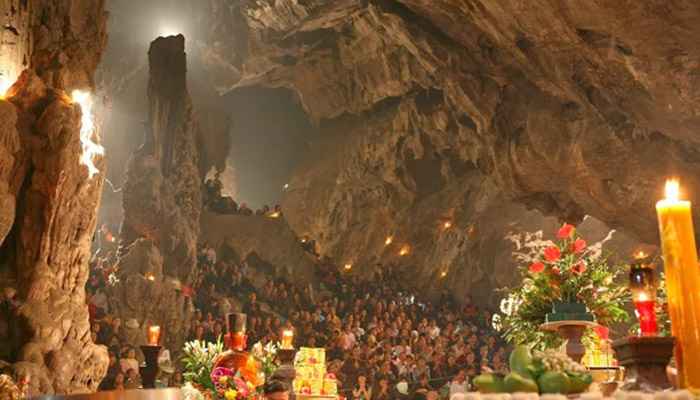
SAPA
The mountainous area of Sapa has some of the most breathtaking scenery in Vietnam. Here you will get close to the fascinating culture and way of life of the ethnic minority hill tribes. Leave all your cares behind and let us take you on a nice trek through forest, rice paddies and to see the spectacular view.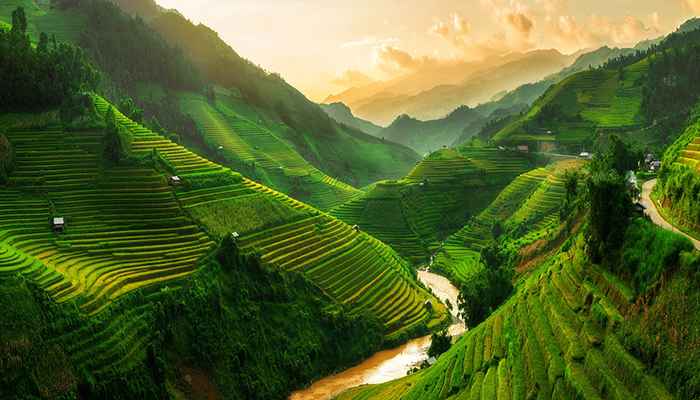
For more information on Apricot Hotel, click HERE
